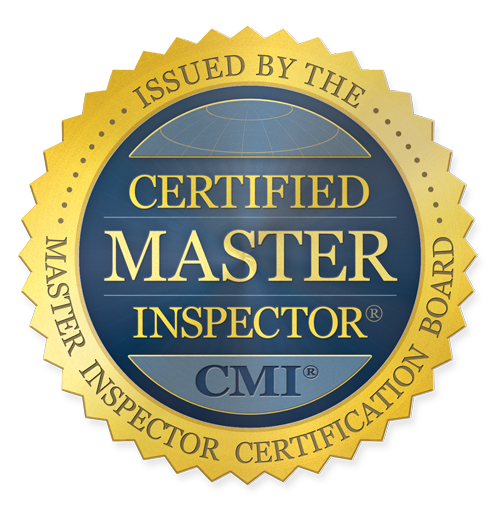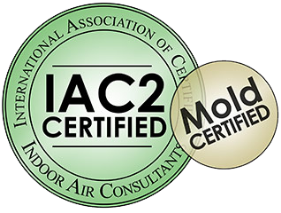You just built (or bought) a new home. It should be perfect, right? So, why would you need a new build inspection from a local, third-party inspector?
New Build Inspections Catch Mistakes & Protect Your Warranty
Contractors are human, meaning they make mistakes or unintentionally overlook issues that can affect your home in minor and significant ways. While your contract includes a final walk-through by the contractor or their representative, this is no comparison to a full new build inspection performed by a local third-party home inspector.
In the hurried and exciting energy of obtaining the occupancy permit, there can be all kinds of things that aren’t installed correctly, don’t work as designed, or need some minor repairs for your home to live up to the expectations. Our Florida state laws protect new home buyers from builder-related flaws in varying increments. The first rung of the warranty expiration dates occurs at the one-year mark.
You have one year after taking occupancy to have certain construction flaws repaired or replaced by the builder at no cost to you. And even though more serious construction or installation flaws are covered for longer, early detection is the key to the building’s safety, security, and comfort. Not to mention, the longer major flaws go without being addressed, the bigger those issues become.
A New Build Inspection is Affordable & Worth It
In most cases, contractors do not include a new build inspection in their contract. However, if you’re looking for prospective builders or getting into a new home construction contract, it might be worth requesting they include a third-party building inspection.
Otherwise, know that these inspections are very reasonable, averaging about $350, depending on the size of the home. This is a small investment when you consider many of the items we find cost far more to repair, replace, or reinstall once they’re out of warranty.
Common Items Found During the Inspection of New Construction Homes
Your final walk-through results in a “punch list” – the items the builder repairs over the next several days or weeks. These are usually cosmetic items, like touch-up paint or a screw missing from a switch plate. Other new home construction issues emerge via the daily use of electrical outlets, lights, and plumbing fixtures, etc.
And then there are items you may never see – like missing insulation or incomplete installation of critical parts or components. Regardless of cosmetic, essential, or structurally threatening – your new home construction inspection results in a detailed inspection report you can pass off to your builder so they can get busy with repairs.
Here are some of the most common items we find during our new building inspections:
1. Grading, Foundation, or Drainage Issues
These are all significant, but you wouldn’t believe how often we find red-flag items relating to grading or drainage issues. Not only do these need to be corrected ASAP (and before the next storm), they often indicate potential problems with the foundation.
Foundation issues should be repaired immediately since any issue with the foundation compromises the home’s structural integrity. The peace of mind of knowing the lot’s grade, foundation, and drainage design are up to code is worth the price of the inspection. Small issues are rarely detectable to non-industry professionals but can cause significant problems later.
2. Issues with Exterior Wall Siding
If your home was built during the rainy season, there’s a chance that faulty waterproofing, hasty siding installation, or other issues are already present. We’ll look for any signs of swollen, wavy or cracked siding.
These issues shouldn’t exist at all. However, when they do, they’re a sure sign that water infiltrated the exterior walls and beyond, which can lead to further issues.
3. Cracked Concrete
When concrete is poorly mixed or installed in the wrong conditions, it shrinks and then cracks. We’ll look for evidence of cracks in your driveway, concrete paths, or any other area where concrete was used in the new home or landscape.
4. Plumbing Issues
You’d be amazed how often we find incorrect plumbing hookups, including reversed hot and cold water in the sink or bath/shower. We’ve even gone to houses where the lesser-used bathroom had hot water running to the toilet bowl, which can elevate utility bills if it’s not caught immediately, not to mention continuous wear and tear on the water heater tank.
5. Inadequate Insulation
Most new homeowners are so focused on the aesthetics and daily function of their new home that they don’t even think about the issues lurking in the unseen areas of the home. Insulation is one of these.
Inadequate insulation installation, or installation that is damaged or misplaced (and not put back) by other contractors working in the attic (plumbing, electrical, HVAC, audio-visual, etc.), should be corrected before you move in. Insulation is a key factor in whole-home energy efficiency and comfort. The longer it goes without correction, the higher your energy bills will be – and the more susceptible the home is to uncomfortable temperature fluctuations and humidity/moisture issues.
6. Malfunctioning Three-Way Switches & Other Electrical Snafus
Your walk-through should include switching on and off all lighting fixtures. However, it’s easy to miss one along the way. You may also find a light switch works great, but until you use the other three-way switch, you won’t know the wiring needs to be redone.
We’ll also let you know if the electrical panel is sufficient. Homes require more electrical outlets than ever, and that trend will likely continue. So you want an electrical panel that safely and adequately handles the current load demands while also having room to grow over the next decade or two.
7. HVAC Issues
It’s not uncommon for us to find small (or large) issues with the HVAC installation. We’ll evaluate the equipment, ensure it’s sized correctly for your home, and verify the ducts are securely connected and insulated.
We’ll also look for gas leaks in case leaky connections pose a carbon monoxide issue for occupants. Sometimes off-gassing of new construction products masks the odor of gas, especially if the leak is small or in an area of the home that isn’t used as often.
Timing is Important When Scheduling a New Build Inspection
The best time to schedule a new home build inspection is after the inspector signs off on occupancy, but before the close of escrow. This way, the contractors can repair any potential issues before you move in.
If you opt to skip the new build inspection, we highly recommend calendaring an 11-month inspection. This inspection is your last chance to catch any one-year warranty issues before they expire – and you wind up on the financial hook for repairs or replacements that the builder was responsible for – and would have paid beforehand.
Contact Super Inspection Pros to schedule a new home inspection and protect your new investment.

